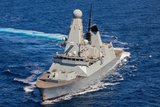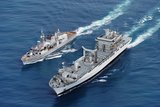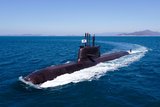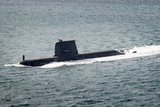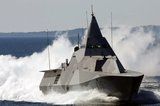Star Safire ordered for USCG HC-144
FLIR Systems will supply eight Star Safire 380HD electro-optical infrared (EO/IR) sensors for the US Coast Guard's (USCG's) HC-144 Ocean Sentry surveillance aircraft, the USCG announced on 16 May. The order has a value of around $6 million.
The EO/IR sensors will improve the aircraft’s detection and identification capabilities. The units are compatible with Minotaur mission system architecture and will increase commonality among the coast guard’s fixed wing platforms, including the C-27J Spartan medium range surveillance aircraft and HC-130J Super Hercules long range surveillance aircraft.
The first unit for the HC-144 acquisition was delivered in April, with delivery of the remaining units planned by the end of 2017.
The HC-144 Ocean Sentry turboprop aircraft has an endurance of over 10 hours and an extensive sensor capability that helps the coast guard fulfill its maritime patrol, drug and migrant interdiction, disaster response and search and rescue missions more effectively.
Related Equipment in Defence Insight
More from Naval Warfare
-
![Second Royal Canadian Navy Joint Support Ship is on schedule to be launched mid-2026]()
Second Royal Canadian Navy Joint Support Ship is on schedule to be launched mid-2026
While the first Joint Support Ship is currently in the final stages of outfitting, the second one is on schedule for launching next year.
-
![Is South Korea finally being taken seriously for Western submarine programmes?]()
Is South Korea finally being taken seriously for Western submarine programmes?
South Korean shipbuilders are beginning to make their mark beyond Asia, competing for major North American and European submarine programmes and becoming serious contenders on a global scale.
-
![AUKUS Pillar 2 could narrow focus to “four key areas” says UK official]()
AUKUS Pillar 2 could narrow focus to “four key areas” says UK official
Few concrete ideas have emerged so far on which “advanced capabilities” will be brought forward under Pillar 2 of the AUKUS partnership, but the Pentagon’s review of the programme could bring more clarity.
-
![Sweden’s decision on four new warships inches closer as it eyes UK, France and Spain]()
Sweden’s decision on four new warships inches closer as it eyes UK, France and Spain
Sweden decided last year that it wanted a significantly larger warship for its Luleå Class programme than originally planned, with three likely contenders that could potentially deliver within the country’s tight schedule.
-
![How the use of artificial intelligence will affect the US Coast Guard’s acquisitions]()
How the use of artificial intelligence will affect the US Coast Guard’s acquisitions
The USCG is pursuing AI tools to improve the way the service conducts its procurement and fielding processes.










